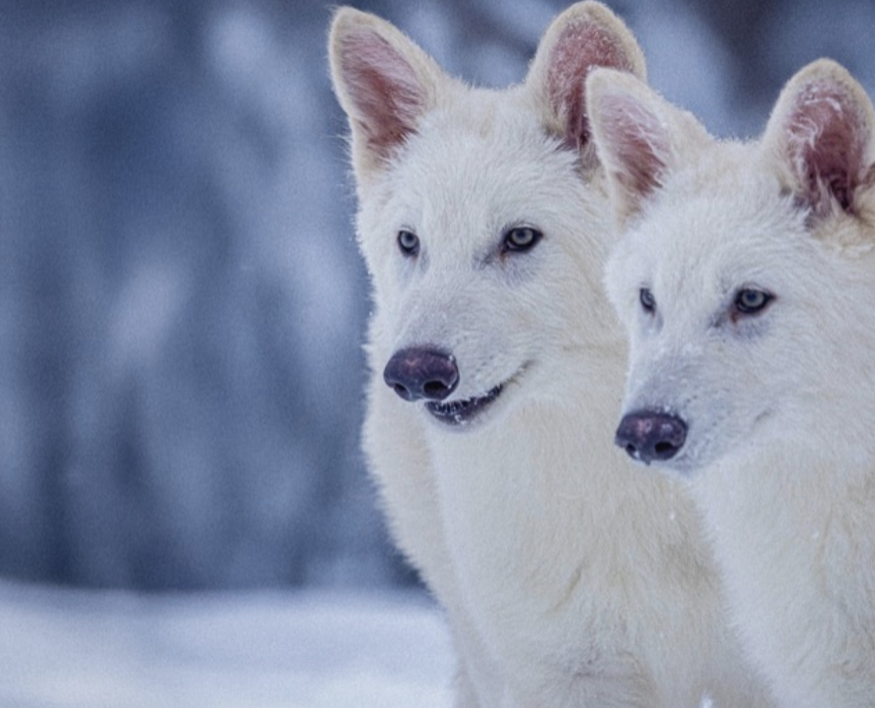
Colossal revealed in its statement, "Healthy developing embryos were then transferred into surrogates for interspecies gestation," resulting in three pregnancies that led to the birth of the first de-extinct species.
In an achievement for biotechnology and genetic engineering, Colossal Biosciences announced the birth of three dire wolf puppies, marking the first successful de-extinction of the species. The company used de-extinction technologies to bring these pups to life, combining ancient DNA with modern gray wolf genes to recreate the extinct Aenocyon dirus. Named Romulus, Remus, and Khaleesi, the pups were brought into existence through a combination of cloning techniques and CRISPR gene-editing technology, using genetic material sourced from a 13,000-year-old tooth and a 72,000-year-old skull. The biotechnology firm, co-founded by Ben Lamm and Harvard geneticist Dr. George Church, leads de-extinction efforts, with the dire wolf serving as a major milestone in projects aimed at reviving extinct species, including the woolly mammoth.
Romulus and Remus, the male dire wolf pups, arrived on October 1, 2024, and Khaleesi, their sister, was born on January 30, 2025. "Our team took DNA from a 13,000-year-old tooth and a 72,000-year-old skull and made healthy dire wolf puppies," said Ben Lamm, CEO of Colossal Biosciences. These pups weigh approximately 80 pounds each and are already 20 to 25 percent larger than typical gray wolves of the same age, demonstrating the phenotypical resemblance to the extinct Aenocyon dirus. "Our novel approach to iteratively improve our ancient genome in the absence of a perfect reference sets a new standard for paleogenome reconstruction," noted Dr. Beth Shapiro, Colossal's chief science officer, as detailed by The Independent.
The pups are being raised in a high-tech ecological reserve, monitored with security measures like drones and live cameras to ensure their well-being. The reserve is certified by the American Humane Society and registered with the U.S. Department of Agriculture. This facility is designed to provide a secure and expansive environment for the dire wolves, facilitating their integration back into the ecosystem while observing their development. Critics, however, raise ethical questions about the implications of de-extinction, with concerns about the animals' ability to adapt to the modern world and potential ecological consequences. "There is a risk of death. There is a risk of serious side effects. That entails a lot of suffering. There will be miscarriages," cautioned Dr. Robert Klitzman, director of the bioethics master's program at Columbia University, to The Daily Beast.
Colossal Biosciences, valued at over $10 billion and with funding from investors including cultural figures like George R.R. Martin, aims to use its de-extinction technologies not only to revive lost species but also to benefit ongoing conservation efforts. The company has outlined plans to restore other extinct species like the woolly mammoth, dodo, and Tasmanian tiger, outlining a vision that extends beyond de-extinction. According to The Hindu, Colossal intends to build on this achievement to bolster biodiversity by repopulating secure ecosystems, potentially starting with Indigenous lands in North America, adding a layer of ecological and cultural significance to their scientific pursuits.
As Colossal Biosciences continues its endeavors, the implications of its work in synthetic biology remain a topic of discourse, combining fascination and controversy regarding the evolutionary and ethical dimensions of reviving extinct species.
© 2025 NatureWorldNews.com All rights reserved. Do not reproduce without permission.





